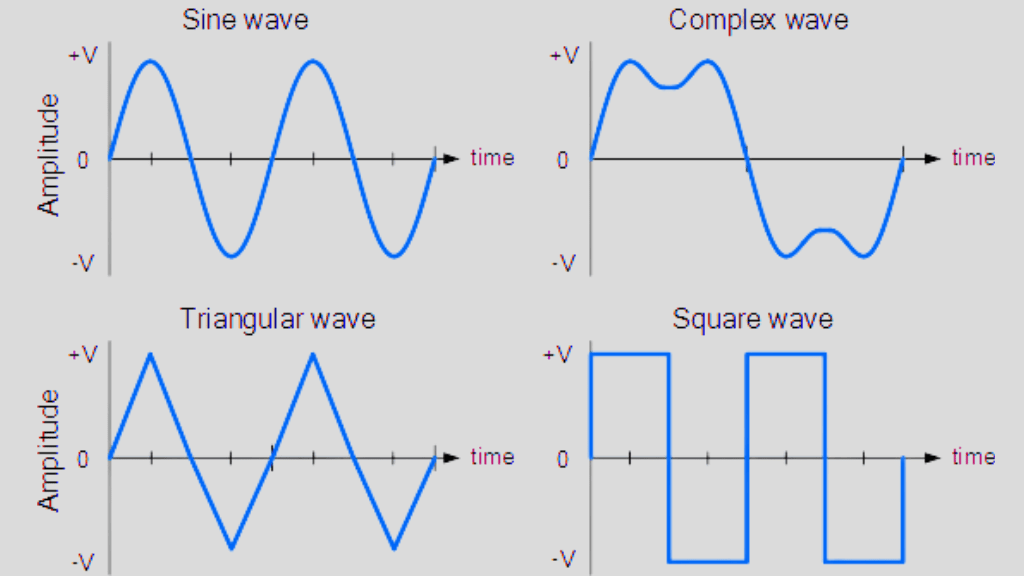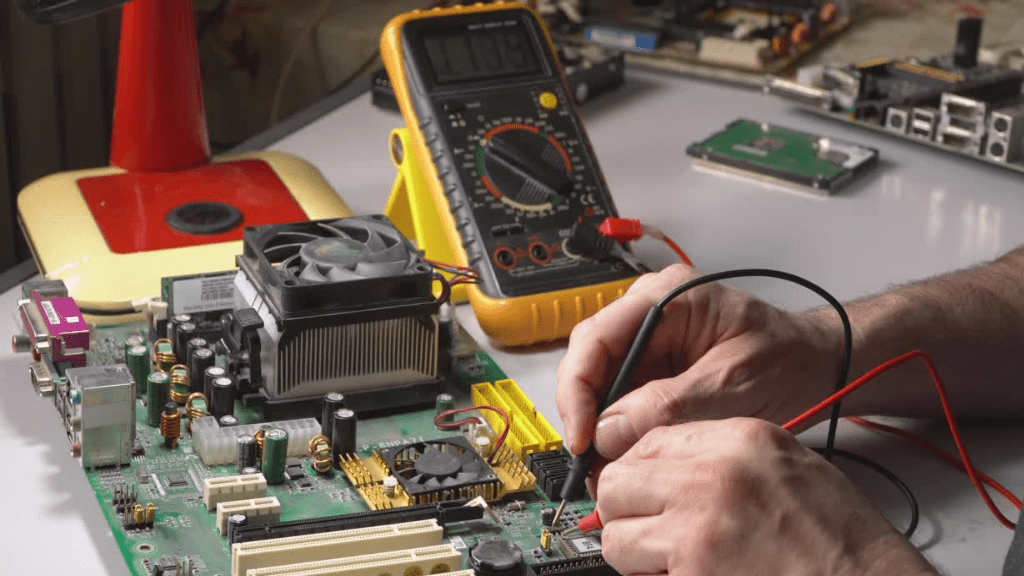What Is a True Rms Multimeter (Explained In Detail)
True RMS multimeter is any meter that can measure nonsinusoidal waves. Compared to Average Responding multimeters that can only measure symmetrical sine waves, true RMS multimeters additionally capture AC voltage frequencies transitioning in square, triangular, or any other distorted waveform by focusing on its heating potential.

What Is The Difference Between True Rms and Normal Multimeter?
The major difference between digital true RMS multimeters and normal or average responding meters is in the RMS multimeter’s ability to get an accurate nonsinusoidal AC current measurement.
Normal digital multimeters make use of averaging mathematical formulas that measure the peak and depth of an AC current waveform to accurately predict the average AC voltage value.
These formulas limit their accuracy to predicting only pure, constant, or symmetrical sinusoidal current waveforms.
True RMS meters use a “root mean square” formula to get an accurate measurement from these complex or distorted nonsinusoidal current waves.
Formulas involve first identifying a DC heating potential value, then using this potential to find an AC voltage measurement on multiple instances, and then averaging these multiple voltage measurements to find the more accurate AC voltage value.

How True RMS Multimeters Work
As mentioned, the formula utilized by true RMS meters uses DC voltage variables to accurately measure AC current waveforms. The important variable here is the heating potential of the DC voltage. Why is the heating potential value used?
AC voltage and DC voltage at the same frequency produce the same heating temperature. For instance, a 50 VAC pulse applies the same heat as a 50 VDC pulse.
How is heating potential measured?
When measuring power dissipated in a resistor, true RMS meters implement the formula:
P = V2/R = W.
This formula works with both DC and AC voltages. So, for instance, a heating potential value of 25W on a resistance of 10 ohms is gotten from either 50 VAC or 50VDC.
Since we are looking for a VAC measurement, then the VAC for that instance is 50V.
Now, considering that VAC pulses are not symmetrical in a nonsinusoidal wave, this heating potential changes frequently. True RMS multimeters then implement an averaging formula to get a more accurate result. This formula is
VRMS= √{(V12 + V22 + V32 + V42 + …Vn2)/n}, where “n” is the number of instances measured and “Vn” is the last instance.
Giving an example, assume there were three instances measured at 50V, 40V, and 70V, the formula is then filled thus;
VRMS= √{(502 + 402 + 702)/3} = 54.77V. Thanks to the RMS measurement, the AC voltage frequency is more accurately placed at 54.77.
Normal or average responding digital meters cannot accurately get this AC voltage value. They use a basic averaging formula that finds the median between the highest point and lowest point of a symmetrical sine wave. They then multiply this average by 1.11.
Since nonsinusoidal current waves are not symmetrical, these measurements are off. The degree of deviation depends on the shape of the distorted wave line.
- A square-shaped wave is usually 10% higher than the accurate measurement
- A single-phase diode rectifier wave is usually 40% inaccurate
- A 3-phase diode rectifier is usually 5% to 30% inaccurate.
When To Use True RMS Multimeters
We know true RMS multimeters are used when there are nonsinusoidal AC power waves, but when do these nonsinusoidal waves occur? Pick true RMS meters when testing voltage in;
- Variable Frequency Drives (VFDs), which are motor drives that control the speed of rotating AC devices like fans and pumps
- Electronic ballasts, which are typically used to control the AC voltage supplied to fluorescent lamps
- Computers
- Controller boards
- Elevators
- HVAC systems
- Devices that utilize solid-state technology

The overlapping factor linking all these AC devices to nonsinusoidal waves is the inconsistent pulses of voltage from them. These devices work with short pulses of voltage rather than a constant supply of it, hence the distorted wave lines or voltage frequencies.
Only true RMS meters can be used to accurately test AC voltage from these devices.
Ordinarily, you don’t need a true RMS meter to deal with your regular electrical home appliances or outlets. Nonsinusoidal AC current waves are, instead, found in high-powered electrical, lighting, mechanical, HVAC, and industrial systems.
If you are a professional who deals with these types of high-powered electrical environments, then you may get a true RMS multimeter. Only this lets you perform your work or collect a measurement with great accuracy.
How To Identify True RMS Multimeters
Recognizing a true RMS multimeter could be a little difficult. Although the manufacturers of these advanced digital meters typically have a “True RMS Multimeter” tag boldly displayed on it sometimes, in most cases, these just look like normal averaging meters.
To identify one, you may need to look up the multimeter’s model number on the internet. This helps you to find accurate details on it and avoid buying an electrical tool that doesn’t give you your desired accurate measurements.
Conclusion
True RMS multimeters implement complex mathematical formulas to give you accurate measurements from voltage tests at all times. A normal average responding meter is only accurate when dealing with a symmetrical sine waveform.
The functionality of true RMS meters, however, covers these symmetrical waves as well as other distorted AC power waveforms like square waves and triangular waves.
If you are a professional who deals with a variety of high-powered systems, getting a true RMS multimeter is the best thing to do. You don’t risk making mistakes with your measurements. We hope you have learned what is a true RMS multimeter.
FAQs
Do I Need a Multimeter With True RMS?
You need a true RMS multimeter to accurately test voltage in electrical, lighting, HVAC, mechanical, and industrial systems. This is because these systems are characterized by nonsinusoidal waves.
When Should You Use a True RMS Meter?
Use a true RMS multimeter when dealing with devices that operate with nonsinusoidal voltage waves. These are inconsistent wave lines found in appliances that work with short pulses of voltage.
What Is the Main Disadvantage of a True RMS Responding Voltmeter?
True RMS multimeters become slow and inaccurate when dealing with devices that work with an extremely distorted waveform. This is because the thermocouples used by the meter affect its performance.

Author
Alex Klein is an electrical engineer with more than 15 years of expertise. He is the host of the Electro University YouTube channel, which has thousands of subscribers.
